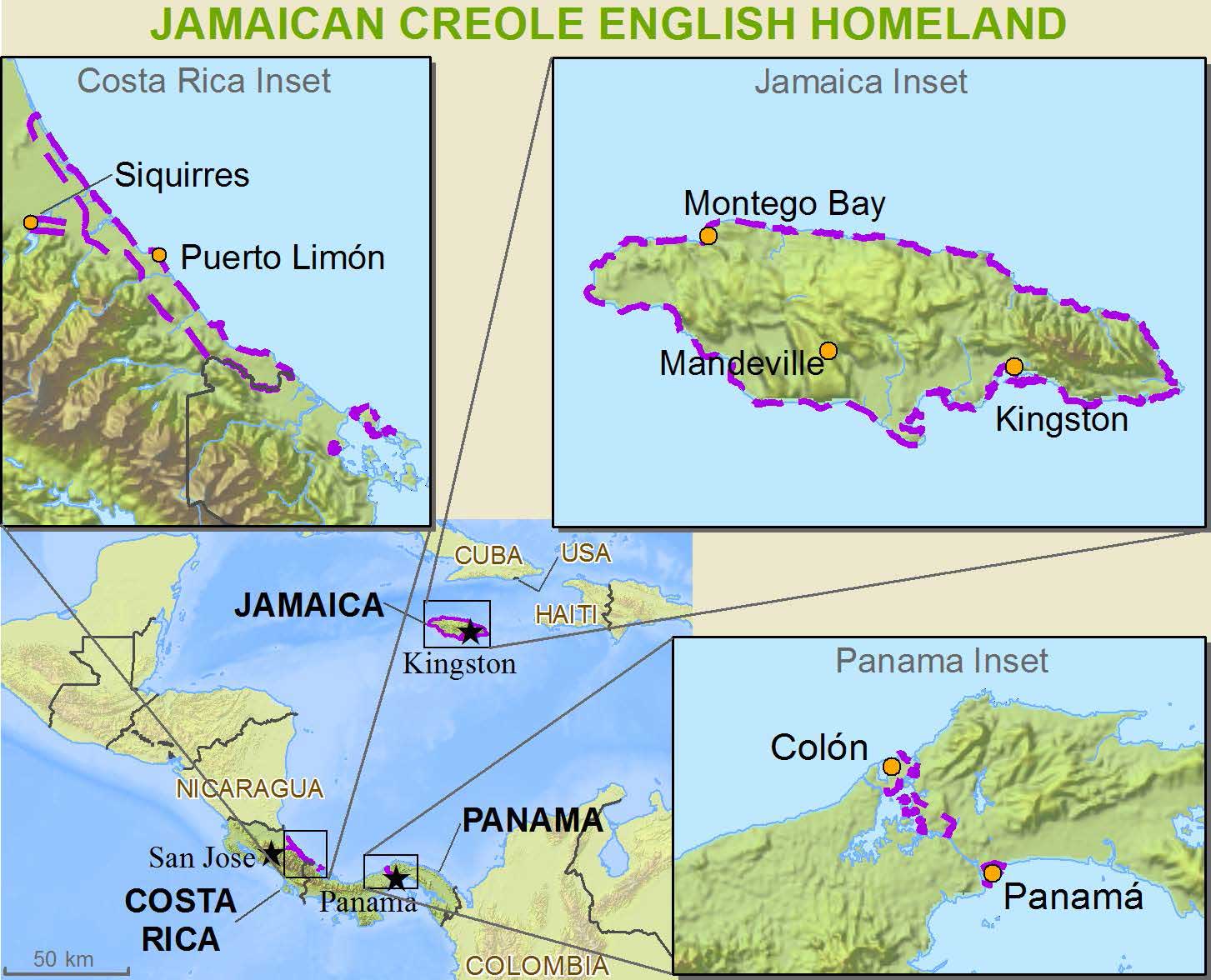Few Expat retirees know about Costa Rica’s second language
English is the first thing that usually comes to mind when one thinks of Costa Rica’s second language. Every year more and more Costa Ricans are studying English. Most private and public schools now offer classes in this language. Learning English as a second language definitely makes ticos more employable. For example, Amazon has almost 6,000 bilingual Costa Ricans working in their three call centers here. My son worked for them and had to speak fluent English in order to get hired. Despite the importance of English as a second language, in the province of Limón another language is often spoken.
Kryol (also called Limón Creole English or Mekatelyu) is a version of Jamaican Creole spoken in Limón Province on the Caribbean coast of the country. This dialect or patois is not really an official language, has many words borrowed from English and is spoken by around 100,000 people.
The roots of this language go back to the days of colonization and the introduction slavery to the new world. Slaves were taken from different parts of Africa and therefore did not speak the same language. Consequently, when brought to the Americas they had to find a way to communicate with each other, the result was the birth of the Creole (Kryol) language.
When slaves were brought to Costa Rica from Jamaica changes were made to the language which eventually led to the creation of the local offshoot called criollo. However, starting in the 1950s the people of Limón had to learn Spanish and everything became Hispanicized. For example, the impact was such that places with English names like “old Harbour” because know as Puerto Viejo.
As people from the country’s Central Valley began to visit Limón and the Kryol language began to die out to some extent. Limon’s new generations preferred to speak Spanish and English.
However, lately there has been a resurgence of Kryol because Limonenses (Limon’s residents) feel proud of their unique language and cultural heritage.




